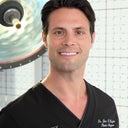What is ultrasonic piezo rhinoplasty? Is it better than usual open and close rhinoplasty ? Is it being done in North America? Thank you
Answers (12)
From board-certified doctors and trusted medical professionals
Dr. Robert Morin, MD, FACS

Dr. Robert Morin, MD, FACS
Board Certified Plastic Surgeon
Answer
Dr. Ronald J. Edelson, MD

Dr. Ronald J. Edelson, MD
Board Certified Plastic Surgeon
Answer
Dr. Manish H. Shah, MD, FACS

Dr. Manish H. Shah, MD, FACS
Board Certified Plastic Surgeon
Answer
Dr. Gerald Minniti, MD, FACS

Dr. Gerald Minniti, MD, FACS
Board Certified Plastic Surgeon
Answer
Dr. Toby Mayer, MD

Dr. Toby Mayer, MD
Board Certified Facial Plastic Surgeon
Answer
Dr. Andrew L. Greensmith, MBChB, FRACS

Dr. Andrew L. Greensmith, MBChB, FRACS
Specialist Plastic Surgeon
Answer
Dr. John Layke, DO, FACS

Dr. John Layke, DO, FACS
Board Certified Plastic Surgeon
Answer
Dr. Mark Been, MD
Dr. Mark Been, MD
Board Certified Facial Plastic Surgeon
Answer
Dr. Travis T. Tollefson, MD, MPH
Dr. Travis T. Tollefson, MD, MPH
Board Certified Facial Plastic Surgeon
Answer
More Rhinoplasty Questions
See all Rhinoplasty Q&AWE SEND PRETTY
EMAILS
What’s trending? Who’s turning heads? Which TikTok myths need busting? We’ve got you. No fluff, no gatekeeping—just real talk. Get our free, unfiltered newsletter.
